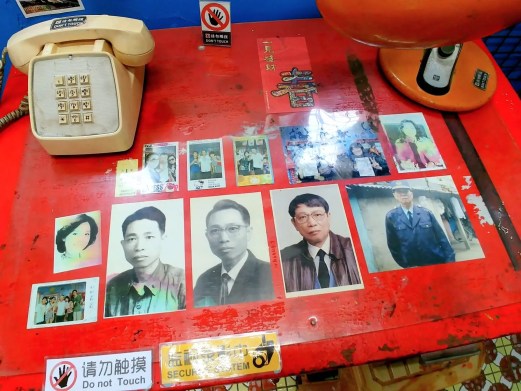After eating lunch at Chun Shui Tang, we went to Park Lane by CMP, which was the designated place for us to board the coach for the afternoon tour we had booked with Klook. The tour, which lasted half a day, was roughly S$35 per person and covered the Rainbow Village and Gaomei Wetlands. Price of the tour included a coach for round-trip transportation, transfers to points of interest, and a Mandarin-speaking tour guide.
Book the tour via Klook
For those of you who are interested to book this same tour, you can use my link to sign up for Klook to receive a S$5 promo code.
The coach took us to the National Taichung Theater, which was the second pick-up spot for tour participants. We were given 30 minutes to explore the theater.
National Taichung Theater 臺中國家歌劇院
The National Taichung Theater is an opera house located in the 7th Redevelopment Zone of Taichung’s Situn District, and covers an area of around 57,685 square meters.
The theater was designed by Japanese architect Ito Toyo, who referred to it as the “sound cave”.
The design of the National Taichung Theater is a masterpiece of architecture. From the exterior, we can see the building’s curved concrete walls and glass windows. Inside, the curved walls and air holes create a seamless blend of spaces.
Afterwards, we continued on to the first destination of our tour, Rainbow Village.
Rainbow Village 彩虹眷村
Note: Rainbow Village is temporarily closed for renovations at the moment.
Some of you may have previously come across Rainbow Village in the news. It was once a village for military dependents, but has since been transformed into an outdoor street art gallery.
Rainbow Village is located at Lane 56, Chun’an Road in the Nantun District of Taichung City. The vibrant paintings covering the walls and ground of the village were created by a man named Mr. Huang Yong Fu, who is also known as Grandpa Rainbow.
The story of Grandpa Rainbow
We were happy to have the opportunity to meet Grandpa Rainbow in person. When I asked if we could take a photo together, he eagerly agreed and even struck a pose, making a finger heart gesture.
Grandpa Rainbow was a soldier from Hong Kong who served in the National Revolutionary Army in 1946 and took part in the Chinese Civil War against the People’s Liberation Army. After the defeat of the NRA in 1949, many soldiers, including Grandpa Rainbow, followed their leader Chiang Kai-shek to Taiwan and were provided with temporary housing in military villages. Over time, these soldiers made these villages their permanent homes.
As time passed, the houses in these villages fell into disrepair and the land was purchased by developers for redevelopment. Despite this, Grandpa Rainbow decided to remain and found himself feeling bored as he was the only person left in the village. To pass the time, he started by painting a bird in his home, and his artwork gradually expanded from there.
His artwork portrayed various elements of life, such as people, animals, as well as Chinese greetings and phrases of wisdom. Through these artworks, we can see Grandpa Rainbow’s childlike side, as there are many adorable figures that he has created.
Final thoughts
A stroll through Rainbow Village is sure to bring a smile to one’s face. It’s a lively and positive environment to be in, and I thoroughly enjoyed capturing photographs of the entire area.
Thank you Ye Ye, for bringing happiness to so many people. 🙂
How to get to Rainbow Village
To reach Rainbow Village, you can either take the THSR to Taichung Station or the TRA to Xinwuri Station, and then transfer to Taichung City Bus 56, 74, or 617 and get off at the Rainbow Village (Lingdong S. Rd.) stop.
8.30am to 10.30pm Sat-Sun

































